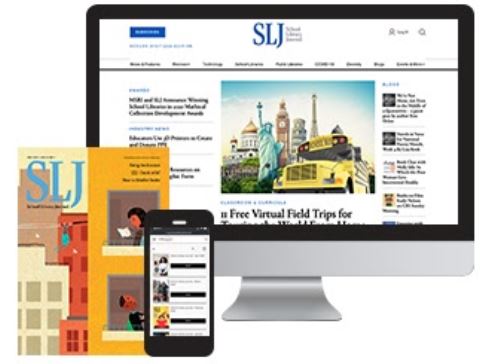Explicit Content
When is a book too sexually explicit to recommend to teens? That’s a question that comes up fairly frequently for our reviewers, and frankly, it’s one that I don’t know the answer to. For the most part it seems to be based on just our gut feelings–something like Justice Potter Stewart’s famous statement that “I know it [hard-core pornography] when I see it.” This has always seemed to me to be far too subjective to me, and I wish we had a more bright-line rule. (In fact, I recently found out that Stewart himself changed his mind on this issue, later deciding that all pornography should have first amendment protection because his “I know it when I see it” standard was too subjective”).
 This came up for me recently when I read Paul Kwiatowski’s And Every Day Was Overcast: An Illustrated Novel (Black Balloon, 2013), and rejected it for this blog based on its sexual content. The novel itself is fairly interesting, if far too bleak and depressing for my own taste. It is a story of the young adulthood of Paul, growing up in suburban Florida, mostly getting high on various drugs, and trying to have as much sex as possible, which turns out to be not terribly much. What makes the novel unique is its format: it is copiously illustrated by photographs (indeed they take up the bulk of the book), many, if not all, of which seem to be vintage photos from the era during which the novel takes place (the mid to late 90s, which just happens to coincide with my own young adulthood). The photos do not directly depict scenes from the novel, rather, they add color and tone by showing another way of imagining the same time and place. Meanwhile, the text is presented in a double-column format, along with brief “transmissions” of a single paragraph or so on a color background. This textual format makes the book look like a book of photographs, with explanatory text, rather than a novel with illustrations–it is really quite a fascinating experiment.
This came up for me recently when I read Paul Kwiatowski’s And Every Day Was Overcast: An Illustrated Novel (Black Balloon, 2013), and rejected it for this blog based on its sexual content. The novel itself is fairly interesting, if far too bleak and depressing for my own taste. It is a story of the young adulthood of Paul, growing up in suburban Florida, mostly getting high on various drugs, and trying to have as much sex as possible, which turns out to be not terribly much. What makes the novel unique is its format: it is copiously illustrated by photographs (indeed they take up the bulk of the book), many, if not all, of which seem to be vintage photos from the era during which the novel takes place (the mid to late 90s, which just happens to coincide with my own young adulthood). The photos do not directly depict scenes from the novel, rather, they add color and tone by showing another way of imagining the same time and place. Meanwhile, the text is presented in a double-column format, along with brief “transmissions” of a single paragraph or so on a color background. This textual format makes the book look like a book of photographs, with explanatory text, rather than a novel with illustrations–it is really quite a fascinating experiment.
But what made me reject the book is several photographs near the end of the novel that get very explicit. In addition to several pictures of topless or fully nude women (made disturbing by the fact that the characters in the book are still in high school) there are a few images which the text leads us to believe are taken from internet porn sites, which do not quite show sexual acts, but are explicit in their own right. These clearly cross the line for me, but I am made somewhat uncomfortable about my reaction because I believe that if Kwiatkowski had simply described the same images in the text I would have defended them–and indeed, the text does describe a few of the narrator’s sexual encounters, none of which I saw as going too far. Meanwhile, one of our other reviewers rejected for review (with my support) Lisa Hanawalt’s hilarious graphic novel My Dirty Dumb Eyes (Drawn & Quarterly, 2013), on the basis of several scenes of characters having sex–even though these are drawings, and very cartoony drawings at that.
 Of course, our rejecting these books for review on this blog doesn’t really mean much–both of these books are likely to be purchased by libraries (they have gotten great reviews in the library journals) and probably teens will get their hands on them. So we aren’t talking about censorship or anything like that. But it is still a question that nags at me. Hanawalt’s book is very funny, and our reviewer and I both think it has many sections that would appeal to teens. Kwiatkowski’s book is dark and depressing, but it is a very accurate portrayal of teenage ennui that has a lot to say to teens. And again, we have recommended many books on this blog which contain explicit sex, but it has always been confined to the textual realm. So how do we deal with images, whether drawings or photographs, and how do we decide how explicit is too explicit?
Of course, our rejecting these books for review on this blog doesn’t really mean much–both of these books are likely to be purchased by libraries (they have gotten great reviews in the library journals) and probably teens will get their hands on them. So we aren’t talking about censorship or anything like that. But it is still a question that nags at me. Hanawalt’s book is very funny, and our reviewer and I both think it has many sections that would appeal to teens. Kwiatkowski’s book is dark and depressing, but it is a very accurate portrayal of teenage ennui that has a lot to say to teens. And again, we have recommended many books on this blog which contain explicit sex, but it has always been confined to the textual realm. So how do we deal with images, whether drawings or photographs, and how do we decide how explicit is too explicit?
Probably the way most librarians have encountered this issue is from the other directions: patron challenges. I have never been at a library which has actually removed a book from the collection, but I have certainly been on committees that have decided to change a challenged book from children’s to YA or from YA to adult, almost always on the basis of sexual content. I would love to hear from our readers how you have handled this situation. Are there certain triggers that always cross the line? What makes a book too explicit for children or for teens for you? If I told you that Kwiatkowski’s book is a towering work of artistic genius that everyone should read (I don’t think think that), would it change your opinion of the photographs in it? Let me know what you think?
![]()
![]()
![]()
![]()
![]()
![]()
![]()
Add Comment :-
RELATED
The job outlook in 2030: Librarians will be in demand
The job outlook in 2030: Librarians will be in demand
ALREADY A SUBSCRIBER? LOG IN
We are currently offering this content for free. Sign up now to activate your personal profile, where you can save articles for future viewing





